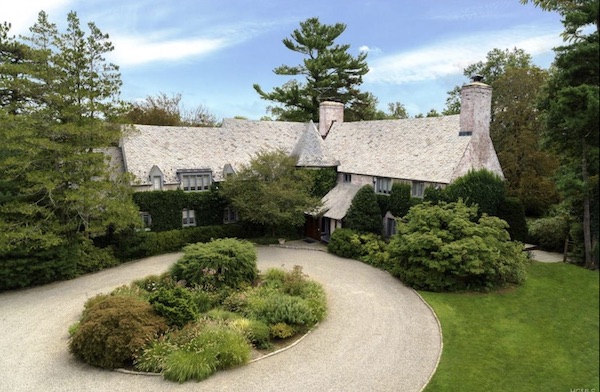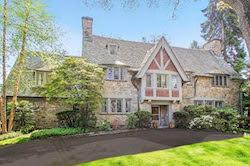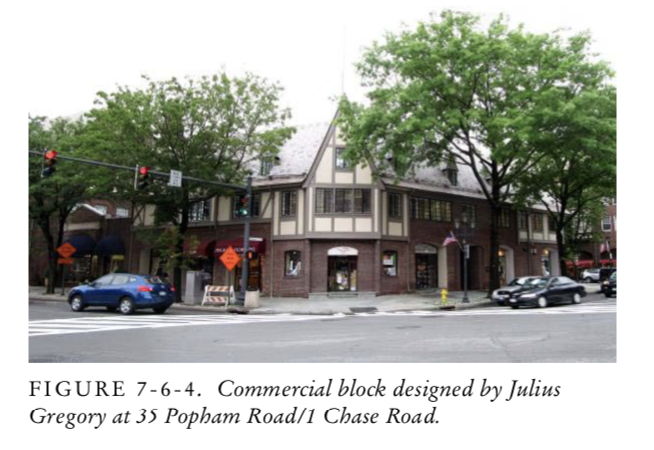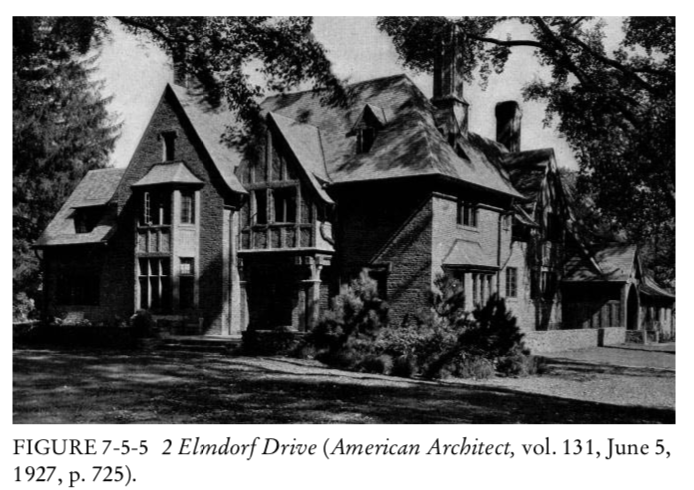Committee for Historic Preservation Votes to Save 11 Dolma Road
- Thursday, 01 October 2020 12:50
- Last Updated: Thursday, 19 November 2020 08:09
- Published: Thursday, 01 October 2020 12:50
- Joanne Wallenstein
- Hits: 5436
 An unexpected report from the architect’s granddaughter may have been instrumental in saving a 1928 Scarsdale manse from the wrecking ball. During a hearing to consider an application to raze a French Normandy style farmhouse at 11 Dolma Road on September 29, Ann Gregory Cefola joined the ZOOM hearing to offer information on her grandfather architect Julius Gregory’s resume, his accomplishments and impact on the development of homes in New York, the Bronx, Westchester and Connecticut. She said, “My family came to Scarsdale in 1927. My father grew up here, I grew up here and I have a sense of this town and its character.” Cefola was so incensed when she learned that the home at 11 Dolma Road might be demolished that she drafted a 47-page history of his work, with citations of his myriad publications and corrections to many of the claims in the applicant’s documents.
An unexpected report from the architect’s granddaughter may have been instrumental in saving a 1928 Scarsdale manse from the wrecking ball. During a hearing to consider an application to raze a French Normandy style farmhouse at 11 Dolma Road on September 29, Ann Gregory Cefola joined the ZOOM hearing to offer information on her grandfather architect Julius Gregory’s resume, his accomplishments and impact on the development of homes in New York, the Bronx, Westchester and Connecticut. She said, “My family came to Scarsdale in 1927. My father grew up here, I grew up here and I have a sense of this town and its character.” Cefola was so incensed when she learned that the home at 11 Dolma Road might be demolished that she drafted a 47-page history of his work, with citations of his myriad publications and corrections to many of the claims in the applicant’s documents.
Her testimony as well as a letter from architectural historian Andrew Dolkhart provided persuasive evidence that 11 Dolma Road met two of the Village’s criteria for preservation, proving that Gregory was “a master” and that the home “embodies the distinctive characteristics of a type, period or method of construction that possess high artistic value.”
After two hearings, the Committee for Historic Preservation voted 5-2 to deny the application to take it down. They considered the background of Julius Gregory, the architect of the home as well as the design of the home and its contribution to neighborhood character in Scarsdale.
At a hearing held just before the first Presidential debate on September 29, 2020, the committee heard appeals from attorney Lawrence Graham of Cuddy and Feder and architectural historian Emily Cooperman as to why architect Julius Gregory was not a master along with evidence that renovations made to the 1928 home were not “sympathetic” to the original design.
The Committee first heard the case in June but held it over to give committee members the opportunity to study the documents and walk the property. The case was brought on behalf of homeowner Sarah Binetter, who with her husband Steven, wished to demolish the home. They are not currently living there and the property has been neglected since the sale, leaving the house overrun with vegetation.
The Village of Scarsdale sought an opinion on the home from Andrew Dolkhart the author of the 2012 Reconnaissance Level Cultural Resource Survey of homes and landmarks in the Village. In that report Dolkhart said, “The talented architect Julius Gregory, whose work can be seen in other areas of Scarsdale (including his own house), designed a huge French farmhouse at No. 11, one of the finest houses of the type in Scarsdale (Figure 7-10-11). The L-shaped brick house has a polygonal corner tower and an entrance set beneath a shed hood, a sophisticated rendition of vernacular rural French design.”
The report says Gregory was a “specialist in suburban homes, and among the most talented architects in the United States, designing this type of house for the upper middle class.”
Describing 11 Dolma the report says, “In their picturesque massing, with steep roof slopes, gables, and dormers, and in their use of such features and slate roofs, casement windows, and tall chimneys, English Cottages resemble their Tudor Revival cousins; some even have small amounts of half timbering. But these buildings tend to have less decorated facades, relying for effect largely on the use of wide expanses of stucco. Architect Julius Gregory, a resident of Scarsdale and major proponent of the English Cottage style, noted in the magazine Architectural Forum that these houses constitute “one of the most interesting and picturesque forms of our domestic architecture. When carried out in the spirit of the old work and placed amid a proper setting, no other type of architecture can equal it in its quality of charm and what we may call ‘livableness.’
The applicants questioned whether or not Gregory was indeed a master, and contended that if he was a master he was a master of the small house, not the large home found on Dolma Road. They showed his work in Fieldston in Riverdale and Shore Acres in Mamaroneck, saying Gregory was best known for his design of smaller suburban dwellings.
About the house as it now stands, they claimed that extensive renovations in the 30,’s, 40’s and early 2000’s by different architects had altered the homes facades, adding and removing dormers, changing a shed roof to a gabled roof and the appearance of the rear of the homes.
Commenting on the design of the house, Cooperman, who was retained by Cuddy and Feder said, “There is a flatness and awkwardness to 11 Dolma – the service wing with gabled end… walled dormers, almost as if they decided to reflect the corner. It doesn’t have the interest, flair and high aesthetics.”
Committee member Lauren Bender defended the alterations made to the home, calling them “sensitive and sympathetic accommodations to the original structure.” Referring to changes made to the servants’ quarters, she said, “We live differently now.’ Calling on her background in art history she said, “When we consider the provenance of a painting we look for where it was exhibited, documented and reproduced.” She pointed out that there was a lengthy record of publications in which Gregory’s homes appeared and said the home was the work of a master and had “high artistic value.”
Cooperman repeatedly referred to the criteria for historic designation for the National Register used by the Philadelphia Historic Preservation Committee. However CHP board member and architect Mark Behr pointed out that , “The criteria for designation is different than the criteria we use for the CHP. It would not meet the criteria for the National Register.”
 53 Old Orchard LaneAmong the homes Gregory designed in Scarsdale were his own house at 3 Church Lane, the Bannerman house on Elmdorf. the Stritzinger House, “a remarkable English Cottage” on Brewster Road; and four “exceptionally fine” English Tudors on Heathcote Road that display “the originality and variety that [Gregory] brought to Tudor design.” In January 2017, the Committee voted to save a home at 53 Old Orchard Lane, also designed by Gregory. Details on the exterior include herringbone brickwork and ornamentation and a steeply-pitched slate roof. The Committee for Historic Preservation found the home to be an excellent example of a stone and stucco Tudor style home.
53 Old Orchard LaneAmong the homes Gregory designed in Scarsdale were his own house at 3 Church Lane, the Bannerman house on Elmdorf. the Stritzinger House, “a remarkable English Cottage” on Brewster Road; and four “exceptionally fine” English Tudors on Heathcote Road that display “the originality and variety that [Gregory] brought to Tudor design.” In January 2017, the Committee voted to save a home at 53 Old Orchard Lane, also designed by Gregory. Details on the exterior include herringbone brickwork and ornamentation and a steeply-pitched slate roof. The Committee for Historic Preservation found the home to be an excellent example of a stone and stucco Tudor style home.
Defending her grandfather’s legacy, Ann Gregory Cefola said, “Dr. Cooperman limits my grandfather’s work to small houses but he did a wide range of work for the cultural tastemakers of the time including the publisher Alfred Knopf, and Ruth and Harry Bakwin for whom he designed a 10,000 square foot house in Ossining where they welcomed distinguished guests like Alexander Calder and Frieda Kahlo and Diego Rivera.
Beyond residences he was one of the original designers of Scarsdale Village. Cefola’s report says, “In 1926, Gregory put his stamp on the village center by designing its southeast corner— one of four dramatic entryways into the downtown area. The challenge: to create a corner building for the Scarsdale Supply Company with upper-floor offices and storage. The design had to integrate “architectural character” that would be “a distinct credit to the community.”
Cefola called Gregory’s work “majestic” and said the preservation criteria were being manipulated by the Binetter’s attorneys.
Also during public comments Scarsdale realtor Angela Retelny made a passionate plea to save the home. She called Dolma Road “exquisite, elegant and breathtaking,” noting it’s “character, elegance and unique homes.” She said, “It’s what makes Scarsdale beautiful. It is in great condition. I am familiar with Gregory’s work. I do believe he is a master, an admired architect. As a realtor and resident I believe this home needs to be preserved.”
Committee Chair Adam Lindenbaum noted that an aerial view of the home was shown in a NY Times article on living in Scarsdale.
Committee member and architect Mark Behr said, “The style, construction and materials are the embodiment of a Norman style farmhouse. “It was designed by a master – a master in Scarsdale.”
About the claim that Gregory was only a master of small homes, Behr said, “We don’t need to specify architects as masters of one style.” Lindenbaum agreed, saying, “He had a broad pallet and that may make him masterful.” Jonathan Lerner said, “Picasso is a master and he had many styles. Was he only the master of his blue period?”
 After some discussion it appeared that several board members agreed that the homes met two of the criteria for preservation:
After some discussion it appeared that several board members agreed that the homes met two of the criteria for preservation:
-That the building is the work of a master; or
-That the building embodies the distinctive characteristics of a type, period or method of construction that possess high artistic value;
The Chair put the application to demolish the home to a vote and it was denied by a vote of 5-2.
Commenting on the decision, Chair Lindenbaum said, “11 Dolma was a well-prepared and thorough application, and all points of view were heard over approximately five hours that spanned two hearing dates. In the end, I personally agreed with the opinions of Professor Dolkart that the home is historically important within the meaning of the Village Code.”
Ann Gregory Cefola, cheered the decision saying, "It's incredibly rewarding to see the Committee on Historic Preservation, in a majority decision, affirm my grandfather's role as a master architect in creating what we know as modern Scarsdale--from setting the distinctive Tudor style of our village center to generating a diversity of gorgeous homes that form much of our town's character."